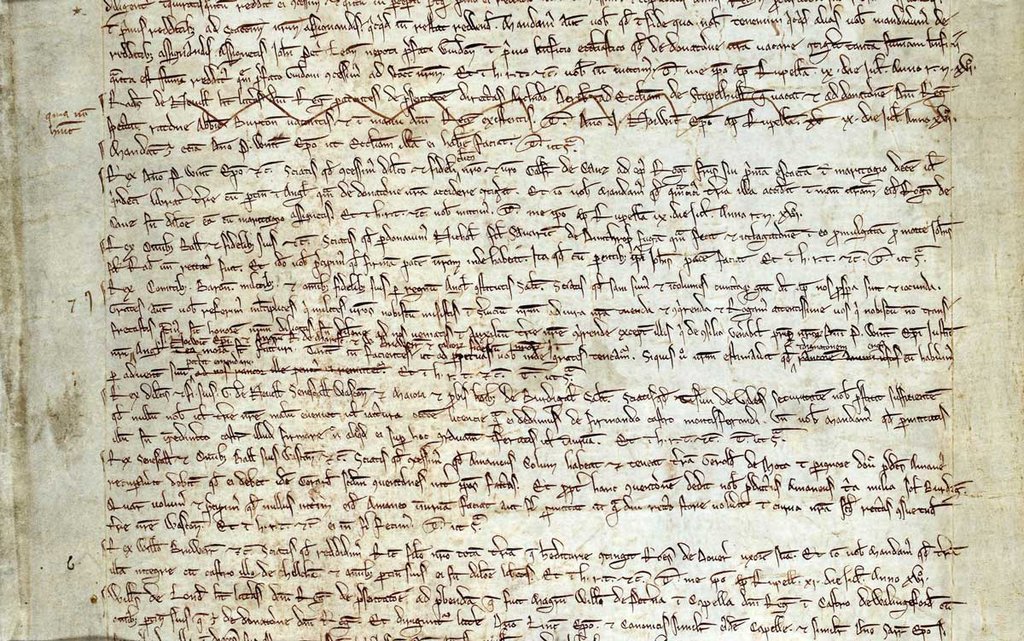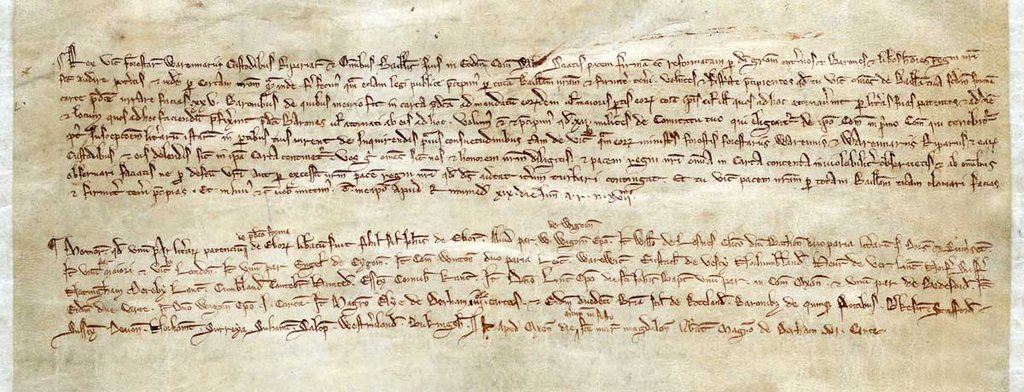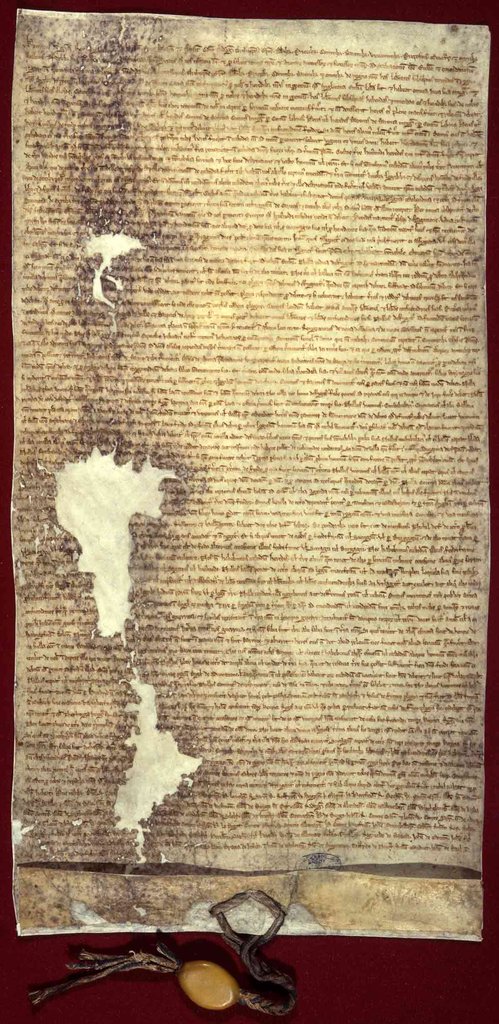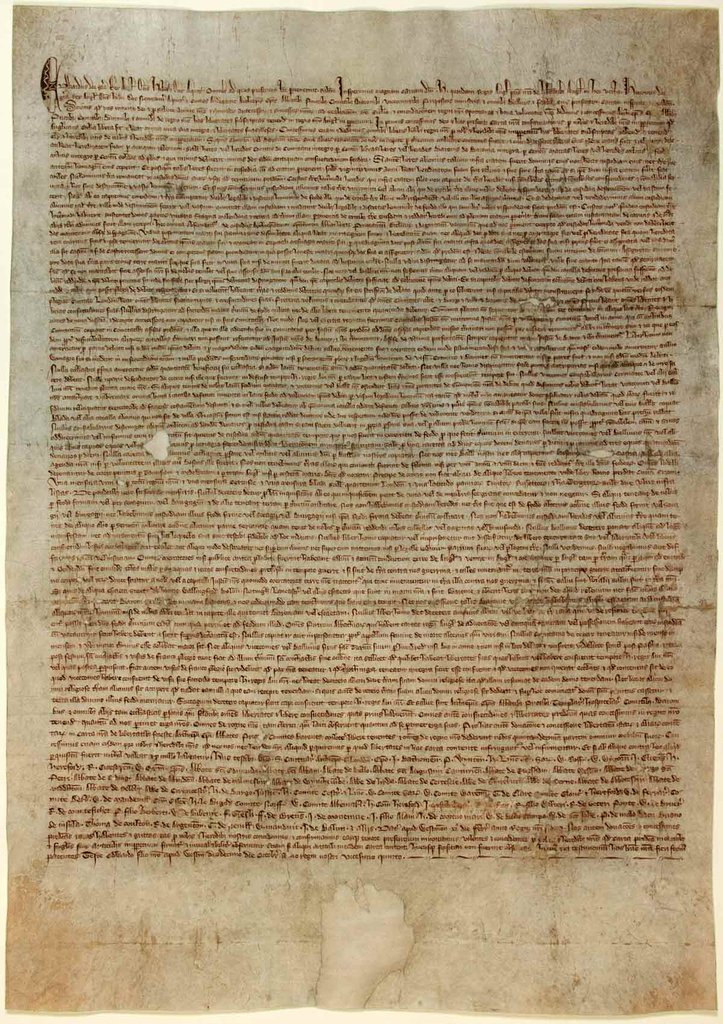Magna Carta
Magna Carta is one of the most famous documents ever written. Its emphasis on liberty – and the principle that the ruler is subject to the law – has resonated down the ages since it was sealed by King John in 1215. We hold copies of many key versions from its early history.
King John's request for aid from the barons of England
Date: July 1214
Catalogue reference: View the record N/A in the catalogue
The reign of King John rolled from one crisis to another. He had an aggressive style of kingship, and after losing the duchy of Normandy to the French in 1204, he tried and failed to regain it. This provoked a rebellion by his barons that destabilised the kingdom.
Here, in July 1214, as the country moved towards civil war, John issued a request for aid. It is recorded on the patent roll, the long parchment document on which copies of outgoing royal correspondence were made.
Stating that he was ‘in good health and condition’, he asked the earls, barons and knights throughout the land to send as many of their knights as possible to him to assist in taking possession of his kingdom.

King John's orders to enforce Magna Carta
Date: June 1215
Catalogue reference: View the record N/A in the catalogue
In 1215 a group of barons rebelled against King John. They complained he ruled in an arbitrary manner, committing crimes and imposing huge unjust penalties on his subjects.
They forced John to concede various liberties and rights which, among other things, guaranteed the freedom of the church and that no free man would be arrested, imprisoned, outlawed or exiled without the lawful judgement of his peers or by the law of the land.
King John and the barons famously sealed their agreement, later known as ‘Magna Carta’, at Runnymede on 15 June 1215. Four days later its terms were published.
John issued a writ – a sealed order to be publicly proclaimed – to inform his officials that ‘a firm peace has been resolved between us and the barons and free men of our kingdom as they can hear and see by our charter…’. This was the first step to embedding Magna Carta in the national consciousness.

Magna Carta from the Duchy of Lancaster
Date: 1225
Catalogue reference: View the record N/A in the catalogue
After agreeing a Great Charter (better known as ‘Magna Carta’) with the barons, King John quickly disowned these written rights. After his death in October 1216, civil war ensued. To help win the war, the minority government of his young son Henry III reasserted Magna Carta.
By 1225, Henry, ruling in his own right, reissued a slightly revised Magna Carta, personally committing to rule by its principles. The 1225 Magna Carta became the definitive version.

Version of Magna Carta enshrined in law
Date: 1297
Catalogue reference: View the record N/A in the catalogue
Magna Carta remained a document of real importance throughout the thirteenth century, as a totem of the liberty of the subject from arbitrary kingship and of the rule of law.
King Edward I was a much more successful warrior king than his grandfather, King John. But Edward’s desire to subdue rebellions in Wales, Scotland and Gascony had imposed severe financial demands on his subjects.
In 1297, when Edward tried to raise money to campaign in Gascony and Flanders, some of his leading noblemen refused to cooperate. In return for a tax grant, Edward of Caernarfon, his teenage son, acting for his father, agreed to regrant Magna Carta and to take taxes only by consent.
The 1297 Magna Carta is the version which was placed onto the Statute Book.
